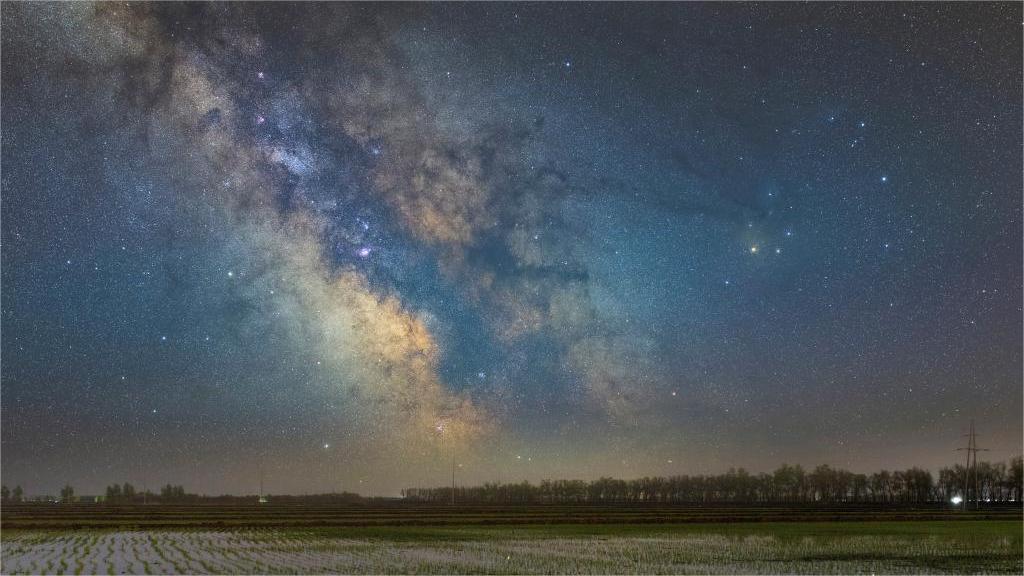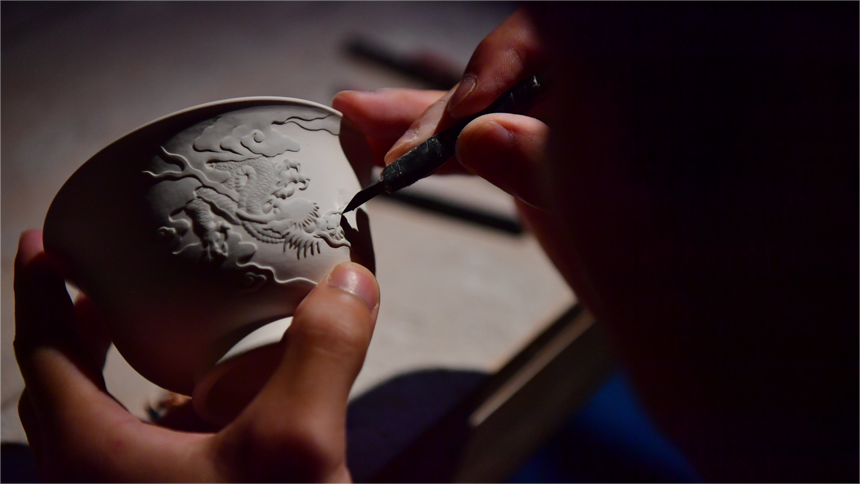Hongjiannao Lake in China's Shaanxi important habitat, breeding place for relict gull

An aerial drone photo taken on June 4, 2024 shows relict gulls at Hongjiannao National Nature Reserve in Shenmu, northwest China's Shaanxi Province. At present, nearly 5,000 nests of relict gulls have entered the incubation and brooding period in the Hongjiannao Lake, China's largest desert freshwater lake. After years of treatment, the lake has regained vitality and has become an important habitat and breeding place for relict gull, which is under first-class national protection in China. (Xinhua/Shao Rui)
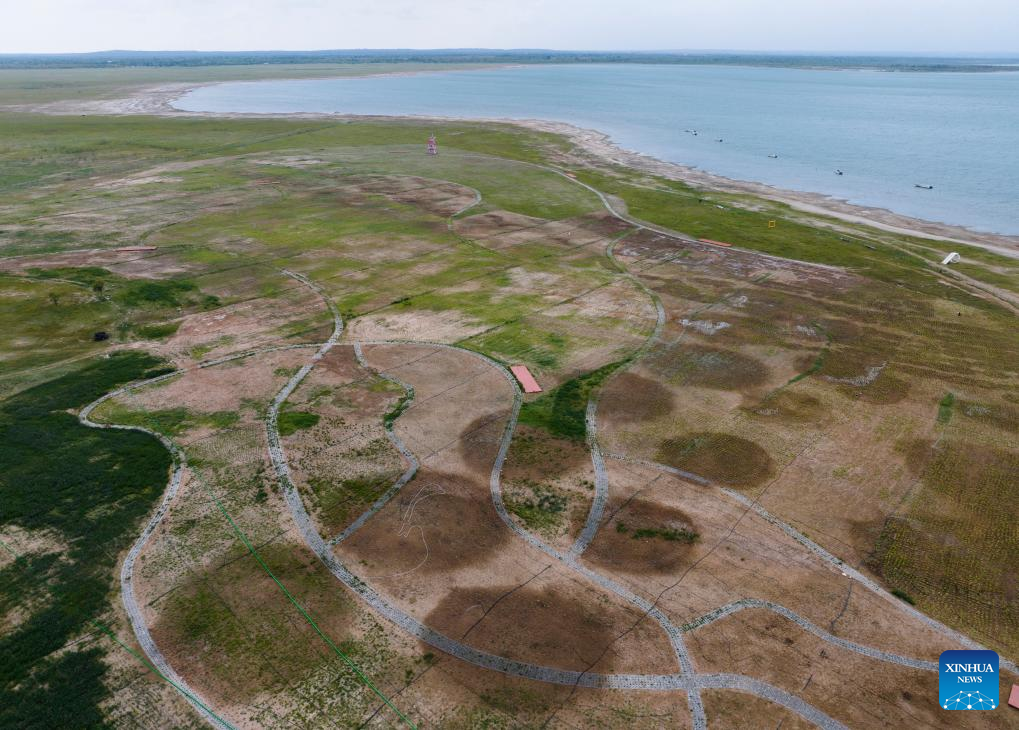
An aerial drone photo taken on June 4, 2024 shows a restoration program for degraded grassland in Hongjiannao National Nature Reserve in Shenmu, northwest China's Shaanxi Province. At present, nearly 5,000 nests of relict gulls have entered the incubation and brooding period in the Hongjiannao Lake, China's largest desert freshwater lake. After years of treatment, the lake has regained vitality and has become an important habitat and breeding place for relict gull, which is under first-class national protection in China. (Xinhua/Shao Rui)
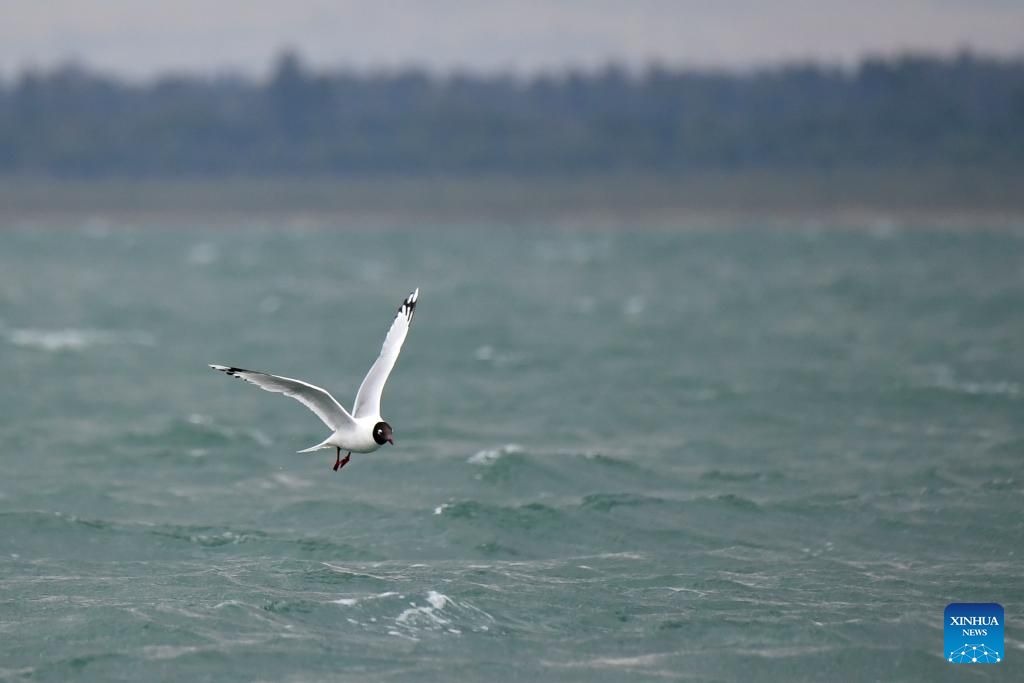
This photo taken on June 4, 2024 shows a relict gull flying at Hongjiannao National Nature Reserve in Shenmu, northwest China's Shaanxi Province. At present, nearly 5,000 nests of relict gulls have entered the incubation and brooding period in the Hongjiannao Lake, China's largest desert freshwater lake. After years of treatment, the lake has regained vitality and has become an important habitat and breeding place for relict gull, which is under first-class national protection in China. (Xinhua/Shao Rui)

An aerial drone photo taken on June 4, 2024 shows relict gulls at Hongjiannao National Nature Reserve in Shenmu, northwest China's Shaanxi Province. At present, nearly 5,000 nests of relict gulls have entered the incubation and brooding period in the Hongjiannao Lake, China's largest desert freshwater lake. After years of treatment, the lake has regained vitality and has become an important habitat and breeding place for relict gull, which is under first-class national protection in China. (Xinhua/Shao Rui)
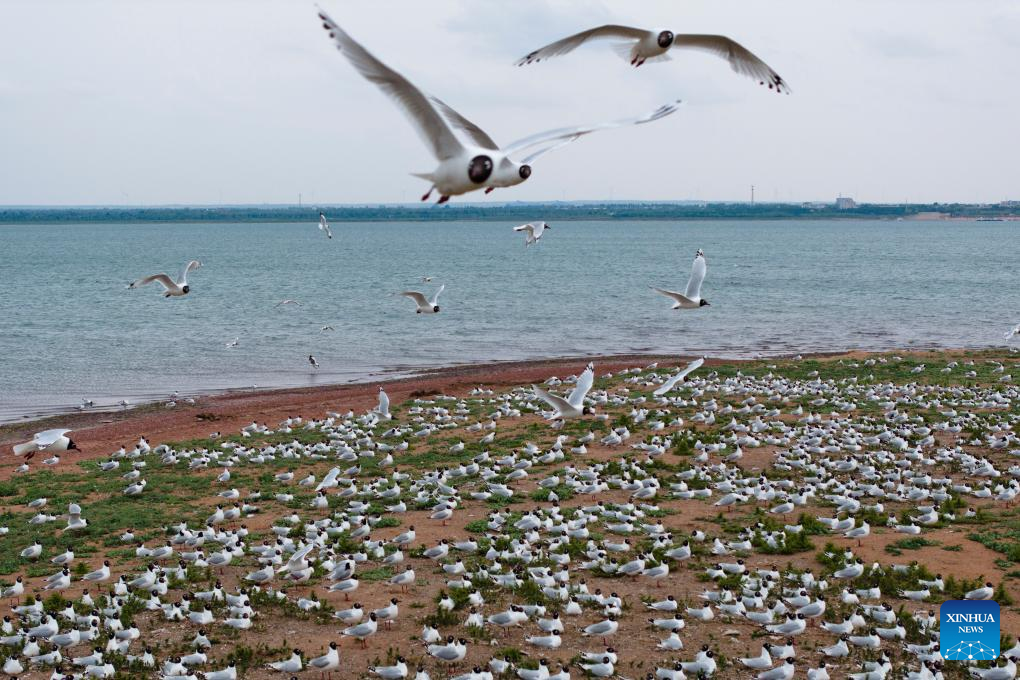
A drone photo taken on June 4, 2024 shows relict gulls at Hongjiannao National Nature Reserve in Shenmu, northwest China's Shaanxi Province. At present, nearly 5,000 nests of relict gulls have entered the incubation and brooding period in the Hongjiannao Lake, China's largest desert freshwater lake. After years of treatment, the lake has regained vitality and has become an important habitat and breeding place for relict gull, which is under first-class national protection in China. (Xinhua/Shao Rui)
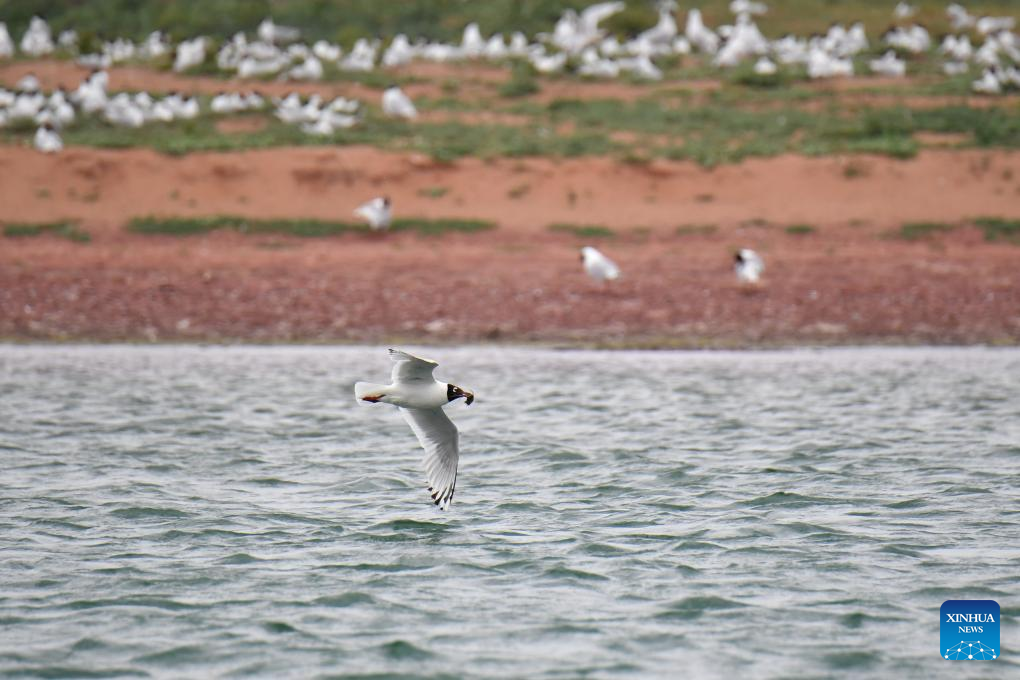
This photo taken on June 4, 2024 shows a relict gull flying at Hongjiannao National Nature Reserve in Shenmu, northwest China's Shaanxi Province. At present, nearly 5,000 nests of relict gulls have entered the incubation and brooding period in the Hongjiannao Lake, China's largest desert freshwater lake. After years of treatment, the lake has regained vitality and has become an important habitat and breeding place for relict gull, which is under first-class national protection in China. (Xinhua/Shao Rui)

An aerial drone photo taken on June 4, 2024 shows a view in Hongjiannao National Nature Reserve in Shenmu, northwest China's Shaanxi Province. At present, nearly 5,000 nests of relict gulls have entered the incubation and brooding period in the Hongjiannao Lake, China's largest desert freshwater lake. After years of treatment, the lake has regained vitality and has become an important habitat and breeding place for relict gull, which is under first-class national protection in China. (Xinhua/Shao Rui)
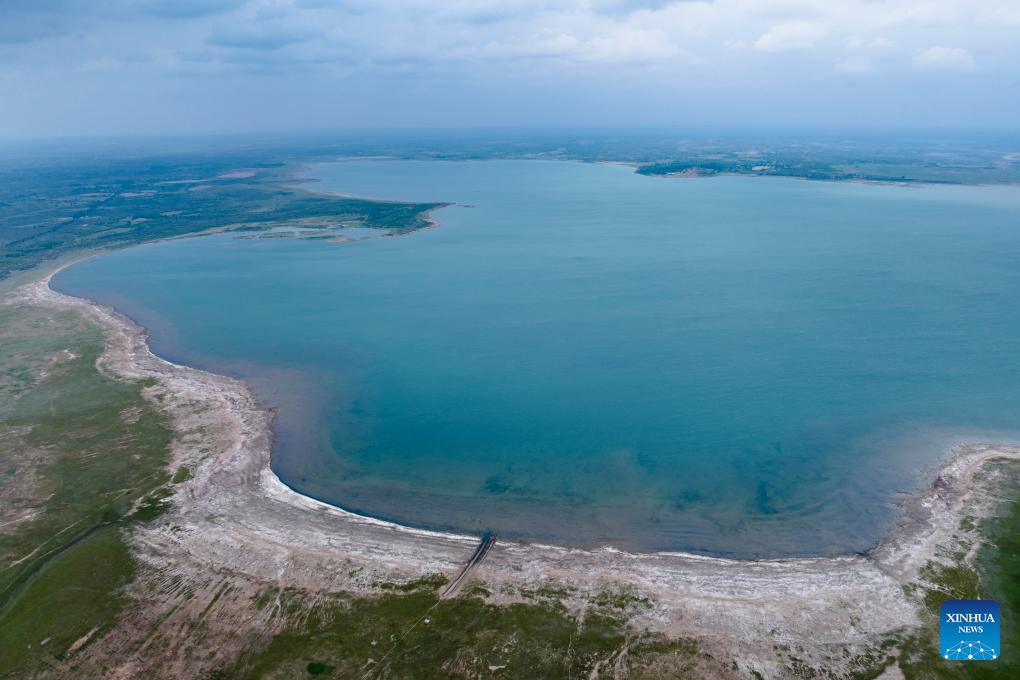
An aerial drone photo taken on June 4, 2024 shows a view of the Hongjiannao Lake in Shenmu, northwest China's Shaanxi Province. At present, nearly 5,000 nests of relict gulls have entered the incubation and brooding period in the Hongjiannao Lake, China's largest desert freshwater lake. After years of treatment, the lake has regained vitality and has become an important habitat and breeding place for relict gull, which is under first-class national protection in China. (Xinhua/Shao Rui)
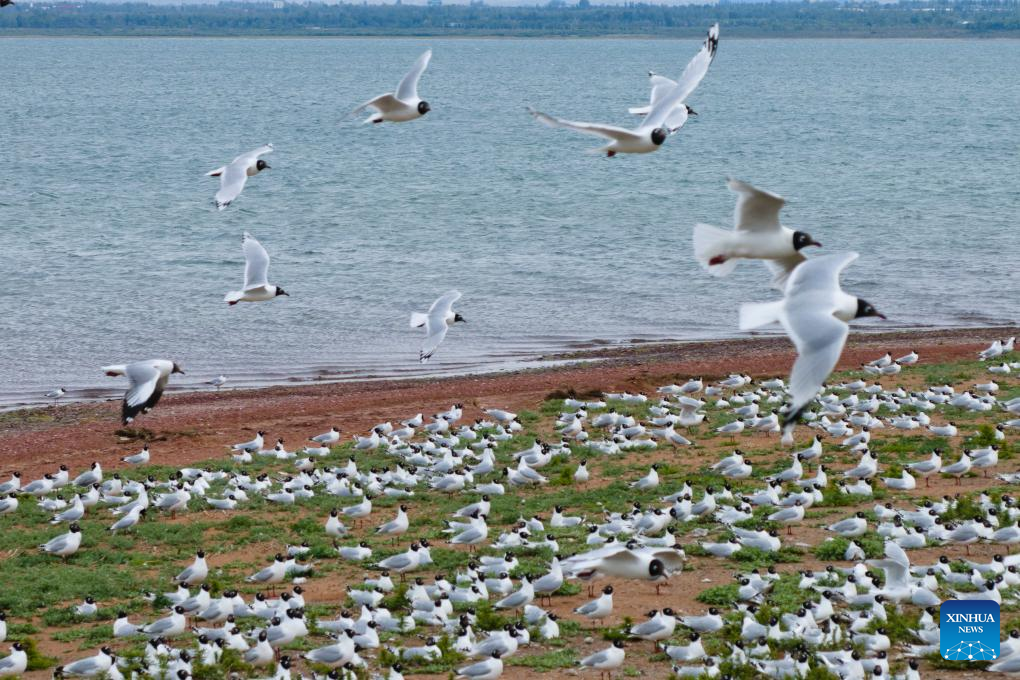
A drone photo taken on June 4, 2024 shows relict gulls at Hongjiannao National Nature Reserve in Shenmu, northwest China's Shaanxi Province. At present, nearly 5,000 nests of relict gulls have entered the incubation and brooding period in the Hongjiannao Lake, China's largest desert freshwater lake. After years of treatment, the lake has regained vitality and has become an important habitat and breeding place for relict gull, which is under first-class national protection in China. (Xinhua/Shao Rui)
Photos
Related Stories
- New study reveals continuous lake expansion on Qinghai-Xizang Plateau
- China's largest freshwater lake sees water level increasing
- Chinese scientists construct database of nutrient concentrations in Chinese lakes
- China's largest freshwater lake sees rising water level
- Ice and water at Baisha Lake in Xinjiang
Copyright © 2024 People's Daily Online. All Rights Reserved.







